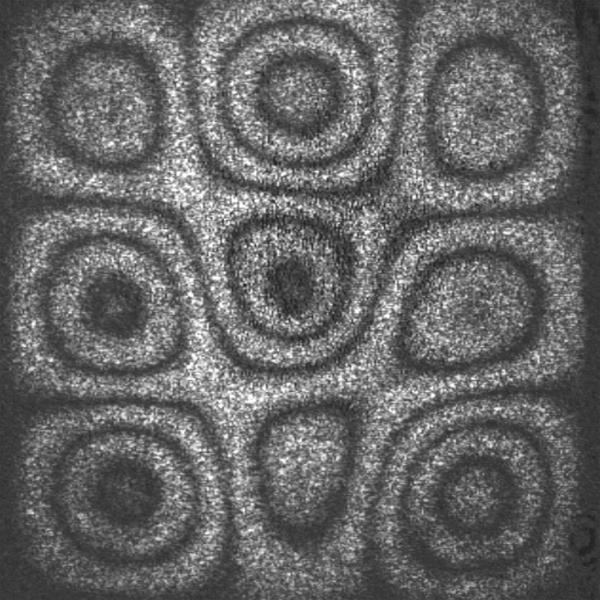 | ||
The vibration of plates is a special case of the more general problem of mechanical vibrations. The equations governing the motion of plates are simpler than those for general three-dimensional objects because one of the dimensions of a plate is much smaller than the other two. This suggests that a two-dimensional plate theory will give an excellent approximation to the actual three-dimensional motion of a plate-like object, and indeed that is found to be true.
Contents
- Kirchhoff Love plates
- Isotropic KirchhoffLove plates
- Free vibrations of isotropic plates
- Circular plates
- Rectangular plates
- References
There are several theories that have been developed to describe the motion of plates. The most commonly used are the Kirchhoff-Love theory and the Mindlin-Reissner theory. Solutions to the governing equations predicted by these theories can give us insight into the behavior of plate-like objects both under free and forced conditions. This includes the propagation of waves and the study of standing waves and vibration modes in plates.
Kirchhoff-Love plates
The governing equations for the dynamics of a Kirchhoff-Love plate are
where
Note that the thickness of the plate is
where the Latin indices go from 1 to 3 while the Greek indices go from 1 to 2. Summation over repeated indices is implied. The
Isotropic Kirchhoff–Love plates
For an isotropic and homogeneous plate, the stress-strain relations are
where
Therefore, the resultant moments corresponding to these stresses are
If we ignore the in-plane displacements
The above equation can also be written in an alternative notation:
In solid mechanics, a plate is often modeled as a two-dimensional elastic body whose potential energy depends on how it is bent from a planar configuration, rather than how it is stretched (which is the instead the case for a membrane such as a drumhead). In such situations, a vibrating plate can be modeled in a manner analogous to a vibrating drum. However, the resulting partial differential equation for the vertical displacement w of a plate from its equilibrium position is fourth order, involving the square of the Laplacian of w, rather than second order, and its qualitative behavior is fundamentally different from that of the circular membrane drum.
Free vibrations of isotropic plates
For free vibrations, the external force q is zero, and the governing equation of an isotropic plate reduces to
or
This relation can be derived in an alternative manner by considering the curvature of the plate. The potential energy density of a plate depends how the plate is deformed, and so on the mean curvature and Gaussian curvature of the plate. For small deformations, the mean curvature is expressed in terms of w, the vertical displacement of the plate from kinetic equilibrium, as Δw, the Laplacian of w, and the Gaussian curvature is the Monge–Ampère operator wxxwyy−w2
xy. The total potential energy of a plate Ω therefore has the form
apart from an overall inessential normalization constant. Here μ is a constant depending on the properties of the material.
The kinetic energy is given by an integral of the form
Hamilton's principle asserts that w is a stationary point with respect to variations of the total energy T+U. The resulting partial differential equation is
Circular plates
For freely vibrating circular plates,
Therefore, the governing equation for free vibrations of a circular plate of thickness
Expanded out,
To solve this equation we use the idea of separation of variables and assume a solution of the form
Plugging this assumed solution into the governing equation gives us
where
The left hand side equation can be written as
where
where
From these boundary conditions we find that
We can solve this equation for
For a given frequency
Rectangular plates
Consider a rectangular plate which has dimensions
Assume a displacement field of the form
Then,
and
Plugging these into the governing equation gives
where
From the left hand side,
where
Since the above equation is a biharmonic eigenvalue problem, we look for Fourier expansion solutions of the form
We can check and see that this solution satisfies the boundary conditions for a freely vibrating rectangular plate with simply supported edges:
Plugging the solution into the biharmonic equation gives us
Comparison with the previous expression for
Therefore the general solution for the plate equation is
To find the values of
we get,
